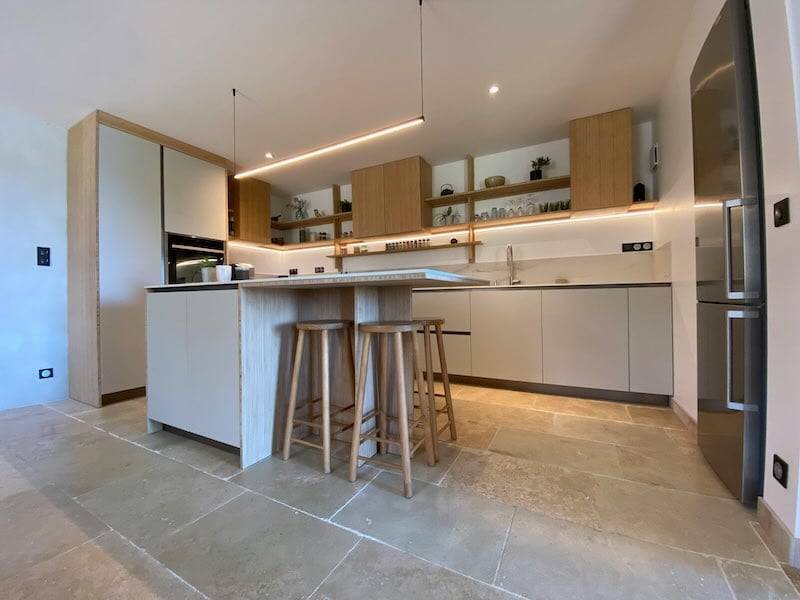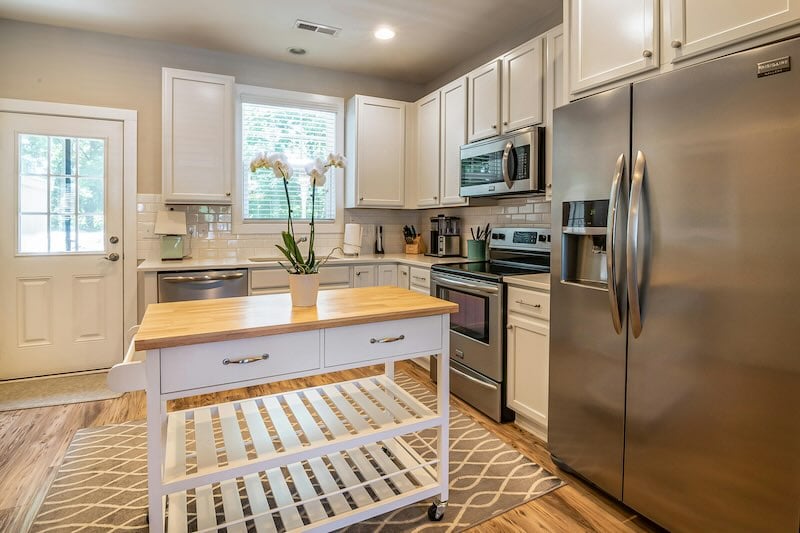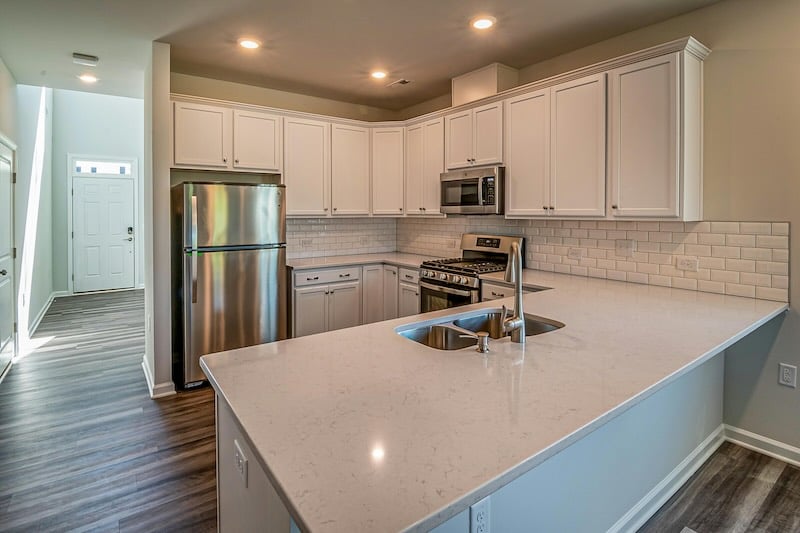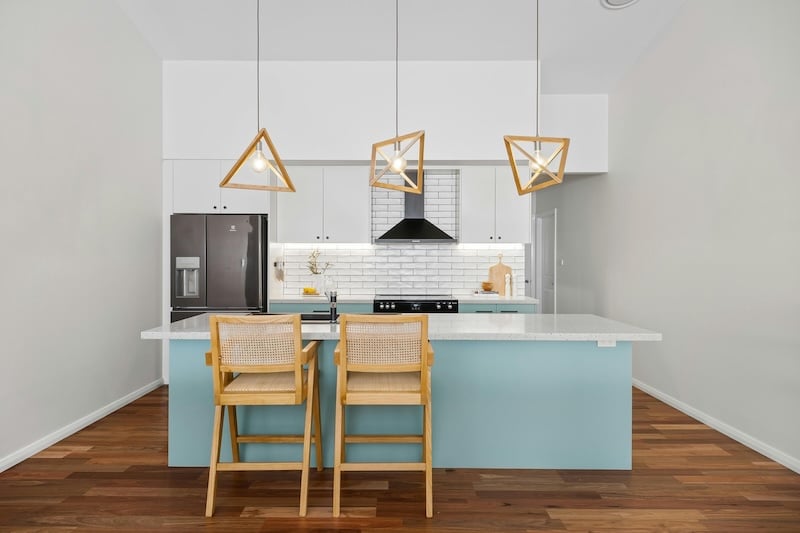Ready to Assemble Cabinets Guide: Quality and Value Compared
by Gary Wade • August 08, 2024
Ready to assemble cabinets have become a game-changer in the world of kitchen remodeling. These versatile and cost-effective solutions offer homeowners a unique opportunity to upgrade their kitchens without breaking the bank. As more people discover the benefits of RTA cabinets, it's crucial to understand how they stack up in terms of quality and value compared to traditional options.
This article delves into the rise of ready to assemble cabinets and their impact on modern kitchen design. We'll explore how to evaluate the quality of RTA cabinets, helping you make an informed decision when choosing the best options for your home. Additionally, we'll discuss strategies to maximize value with these cabinets, ensuring you get the most out of your investment. By the end, you'll have a clear understanding of why RTA cabinets have become a popular choice for savvy homeowners looking to balance quality and affordability in their kitchen renovations.

The Rise of RTA Cabinets in Kitchen Remodeling
Market Growth
Ready to assemble (RTA) kitchen cabinets have emerged as one of the fastest-growing segments in the cabinet industry. This growth has an impact on the low cost and high convenience these cabinets offer. The global RTA kitchen cabinet market has experienced significant expansion, with its value estimated at USD 3.25 Billion in 2023. Projections indicate that it will reach USD 4.3 Billion by the end of 2030, showcasing a remarkable CAGR of 24.65% during the forecast period of 2024-2030.
Consumer Trends
The increasing popularity of RTA cabinets has its roots in changing consumer preferences and lifestyle shifts. Homeowners now lean towards efficient, space-saving storage solutions that maximize the use of limited areas. This trend has led to a growing demand for customizable cabinet options that cater to individual design preferences and specific spatial requirements.
Kitchen Cabinet Depot has responded to this demand by offering a wide array of cabinet styles, colors, and finishes. The rise of modular and flexible storage solutions has enabled consumers to create tailored kitchen layouts that address their unique needs. Additionally, there has been a notable shift towards eco-friendly products, with customers showing a preference for sustainable materials and responsible manufacturing processes.
Industry Statistics
The RTA cabinet market has shown resilience and growth, even in challenging times. Despite the impact of the COVID-19 pandemic, the global market size was estimated to be worth USD 3737.3 million in 2021. Forecasts suggest it will reach a readjusted size of USD 4680.9 million by 2028, with a CAGR of 3.3% during the 2022-2028 period.
Regional market shares provide insight into the global distribution of RTA cabinet demand:
| Region | Market Share |
| North America | 44% |
| Europe | 24% |
| Asia Pacific | 24% |
| Rest of World | 8% |
These statistics highlight the widespread adoption of RTA cabinets across different geographical regions, with North America leading the market. The growing popularity of RTA cabinets in kitchen remodeling projects has its foundation in their affordability, customization options, and the increasing focus on efficient home improvement solutions.

Evaluating RTA Cabinet Quality
Material Selection
The quality of ready to assemble cabinets has its foundation in the materials used for their construction. Kitchen Cabinet Depot offer a range of options, each with unique characteristics. Solid wood cabinets provide durability and a timeless look, making them an excellent choice for those seeking long-lasting quality. Plywood, another popular material, offers stability and resistance to warping, making it ideal for kitchens with high humidity levels.
For a more budget-friendly option, medium-density fiberboard (MDF) cabinets present a versatile solution. These cabinets, made from wood fibers combined with resin and wax, can be easily painted or stained to achieve the desired esthetic. Some manufacturers also use high-density fiberboard (HDF), which offers the appearance of hardwood without the susceptibility to temperature changes.
Manufacturing Standards
To ensure the highest quality, RTA cabinets undergo rigorous testing to meet industry standards. The Kitchen Cabinet Manufacturers Association (KCMA) A161.1 Quality Certification Seal serves as a benchmark for cabinet quality. This certification involves extensive testing to verify the structural integrity and strength of cabinets.
Tests include evaluating drawer operation under load, assessing the impact resistance of drawer fronts, and checking door durability through thousands of opening and closing cycles. These tests aim to simulate real-world use and ensure that the cabinets can withstand the daily rigors of a kitchen environment.
Quality Control Measures
Manufacturers implement strict quality control measures throughout the production process. This begins with inspecting raw materials for defects, damages, or inconsistencies in color, texture, or finish. During assembly, each component undergoes thorough examination to ensure it meets specified dimensions and aligns correctly.
Quality control also extends to hardware installation and functionality. Hinges, handles, and other components are checked for proper installation and smooth operation. Technicians verify that doors align correctly when closed and that there are no undesired noises during operation.
Finally, the finished cabinets undergo a series of checks to ensure they meet design specifications and safety standards. This includes verifying color accuracy, texture consistency, and the absence of sharp edges or corners that could cause injury.

Maximizing Value with RTA Cabinets
Cost Savings Strategies
Ready to assemble (RTA) cabinets offer homeowners a cost-effective solution for kitchen remodeling. One of the primary advantages is the potential for significant savings compared to pre-assembled options. To maximize value, homeowners can employ several strategies. Firstly, purchasing RTA cabinets online often eliminates extra shipping costs, making them an ideal choice for budget-conscious renovators. Additionally, taking advantage of sales and promotions can lead to further savings, with some retailers offering discounts of up to 20% or more during special events.
Another way to stretch the budget is by tackling the installation process as a DIY project. Many RTA cabinet manufacturers design their products to be easily assembled with basic tools, making it accessible for homeowners with varying levels of experience. By eliminating professional installation fees, individuals can allocate more funds towards high-quality materials or additional accessories.
Customization Techniques
While RTA cabinets come in standard sizes and styles, there are numerous ways to personalize them for a custom look. One popular technique is to mix and match cabinet colors, creating a striking contrast between island and perimeter cabinets. This approach adds visual interest and depth to the kitchen space without the high cost of custom cabinetry.
Another customization option is to add decorative elements such as crown molding or intricate trimwork. These small touches can elevate the overall appearance of RTA cabinets, giving them a high-end, custom-built look. For glass-front cabinets, applying decorative film to the glass panels can add a vintage feel and provide a touch of privacy.
Installation Tips
To ensure a smooth installation process, proper planning is essential. Begin by sorting cabinets by type, grouping uppers with uppers and lowers with lowers. This organization streamlines the assembly process, as similar cabinets often share construction methods. When assembling drawers, use pipe clamps to pull dovetail joints tightly together, ensuring sturdy construction.
For wall cabinets, it's advisable to install them before base cabinets. This approach provides easier access and maneuverability during the installation process. When securing cabinets to the wall, use 2½-inch deck screws with washers or pan-head cabinet screws for superior support, especially for cabinets that will hold heavy items.
By following these RTA cabinet installation strategies and tips, homeowners can maximize the value of their RTA cabinets, achieving a high-quality, customized kitchen without breaking the bank.

Affordable Ready to Assemble Cabinets
Ready to assemble cabinets have emerged as a game-changer in kitchen remodeling, offering a perfect blend of quality and value. Their rise in popularity stems from the ability to provide homeowners with affordable, customizable solutions that don't skimp on durability. Kitchen Cabinet Depot and other manufacturers have responded to this trend by offering a wide range of options, from solid wood to MDF, catering to various budgets and preferences.
The key to maximizing value with RTA cabinets lies in smart planning and execution. By taking advantage of online purchases, DIY installation, and customization techniques, homeowners can achieve a high-end look without breaking the bank. As the market continues to grow, RTA cabinets are set to remain a top choice for those looking to balance quality and affordability in their kitchen renovations, making dream kitchens more accessible than ever before.
FAQs
1. Are ready-to-assemble (RTA) cabinets of good quality?
RTA cabinets can be of excellent quality, depending on the materials used. Just like traditional cabinets, the durability and strength of RTA cabinets are largely determined by their construction materials. High-quality RTA cabinets are typically expected to last between two to three decades.
2. How much less do ready-to-assemble cabinets cost compared to traditional cabinets?
Ready-to-assemble cabinets generally cost between 30% to 50% less than traditional cabinets. The assembly process for most RTA cabinets is straightforward, often requiring only basic tools like a screwdriver. They typically use screws and cam-lock hardware or angle brackets for assembly.
3. How can you determine if cabinets are of high quality?
High-quality kitchen cabinets exhibit several key features, including all-plywood construction, full-height back panels, soft-close hinges, undermount soft-close drawer glides, hardwood dovetail drawer boxes, being fully assembled in the factory, having face frames, and offering options for customizability and modifications.
4. What are the different quality levels of kitchen cabinets?
Kitchen cabinets are categorized into four quality grades: ready-to-assemble (RTA), stock, semi-custom, and custom. Each grade varies in quality and customization options. When choosing cabinets, it's important to set a budget first and then explore the cabinetry lines and options that fit within that budge
overall rating: my rating: log in to rate



